
Ꮓiba seems to be the perfect colleague: hard-working, efficient and fun to be around. However, Ziba isn't a person; she's a conservation detection dog, especially trained to sniff out the presence of rare bats and birds. The sixyear-old German shorthaired pointer is one of an increasing number of dogs helping to conserve wildlife. Similar to sniffer dogs employed to detect drugs or explosives, these detection dogs are using their extraordinary sense of smell to identify anything from great crested newts to pine martens.
Or, in Ziba's case, curlews. In the Antrim Hills of Northern Ireland, Ziba and her handler, Caroline Finlay, are spearheading a new trial with the RSPB to protect these totemic wading birds. The breeding population has fallen by 82% in the region since 1987, with an estimated 150 pairs remaining. There are a variety of reasons for that, one of them being that predation is quite high,' explains Dr Finlay. 'If we find their nests, we can put up antipredator fencing around them and that really gives them a boost.'
For the conservation team, spotting a handful of well-camouflaged nests over thousands of hectares of moors and farmland is an extremely difficult task-this is where Ziba comes in. Dogs' noses have up to 300 million olfactory receptors-compared with about six million in humans. In initial tests using fake nests, Ziba found twice as many as the human searchers. Their first field trial was carried out this breeding season. The welfare of the birds-as well as the dogs-is paramount. The team was given a licence by the Northern Ireland Environment Agency, which specified that dogs had to be on a 16ft line and to clear each area within a short time limit, to minimise disturbance to the birds.
This story is from the {{IssueName}} edition of {{MagazineName}}.
Start your 7-day Magzter GOLD free trial to access thousands of curated premium stories, and 9,000+ magazines and newspapers.
Already a subscriber ? Sign In
This story is from the {{IssueName}} edition of {{MagazineName}}.
Start your 7-day Magzter GOLD free trial to access thousands of curated premium stories, and 9,000+ magazines and newspapers.
Already a subscriber? Sign In
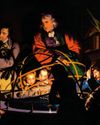
A leap in the dark
The primal play of light and shadow, whether in Leonardo's ever-so-subtle sfumato or Caravaggio's dramatic contrasts, has shaped Western art, as Michael Hall reveals

Beauty and the blimp
Inflammable airships may be gone, but a new hybrid aircraft, capable of delivering eco-friendly aviation, is set to take to the skies with a bang, finds Charles Harris

Three wishes for food and farming
Royal hedge planting, the terrible toll on Ukrainian farming and a maiden speech
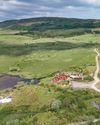
Seeing the wood for the trees
Scotland's much-evolved forestry industry has become a focus for clever investors
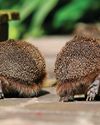
Let's fall in love
Birds do it, bees do it, even educated fleas do it. Laura Parker finds that, when it comes to creatures mating for life, persistence, patience and a little dad dancing are key to success
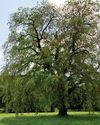
Back from the dead
THREE Wentworth elm saplings have been planted in the grounds of the Palace of Holyroodhouse, Edinburgh, and on the Highgrove estate in Gloucestershire-29 years after what was thought to be the lastknown Wentworth elm died.

A man among men
What makes a master? Beloved of the commercial art world, handled warily by art historians, the word has long been opaque. Michael Prodger investigates its many meanings-and discovers that being male confers an unfair advantage
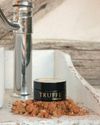
Unearth one of life's luxuries
Black diamonds are a girl's best friend this Valentine's Day, with Périgord truffle-based skincare from TRUFFE

Adventure awaits
Spend an unforgettable family holiday on the Benmore Estate and experience some of Scotland's finest wildlife and sporting activities

Let the art rule the head
Despite being a world leader in everything from jewellery to fashion and music, the UK is failing to nurture creativity at school and in regional centres. Tristram Hunt, director of the V&A Museum, calls for an urgent review